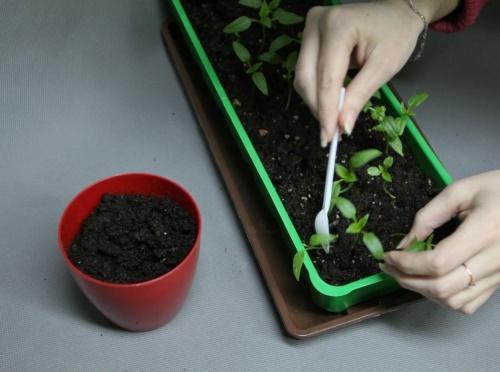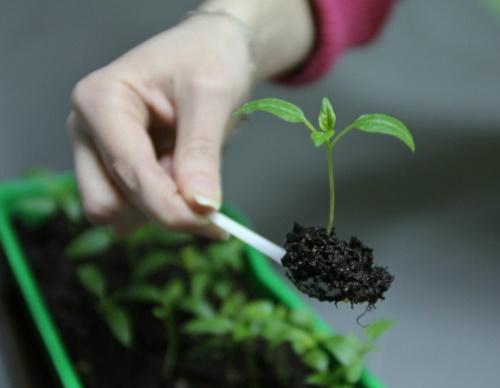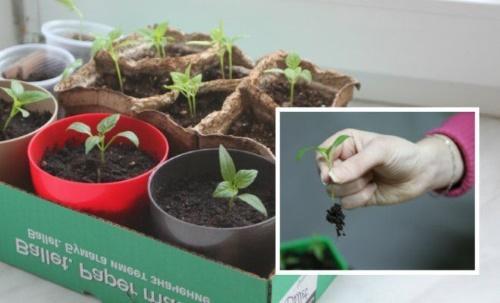Diving pepper seedlings: how to do it right
 Have you ever paid attention to the roots of pepper, that is, young seedlings? Small, low-branched, fragile and thin, they immediately indicate that frequent transplants are not for this culture. Unfortunately, not all gardeners have the opportunity to build a mini-greenhouse in the house, especially in an apartment, where all plants will be free, light and warm. Most often, the seeds are initially sown in common containers, and only then they are transplanted into separate pots for growing - this procedure is called a pick, and in such cases even peppers cannot do without it. How to dive the pepper correctly so as not to damage the delicate plants and injure their root system less?
Have you ever paid attention to the roots of pepper, that is, young seedlings? Small, low-branched, fragile and thin, they immediately indicate that frequent transplants are not for this culture. Unfortunately, not all gardeners have the opportunity to build a mini-greenhouse in the house, especially in an apartment, where all plants will be free, light and warm. Most often, the seeds are initially sown in common containers, and only then they are transplanted into separate pots for growing - this procedure is called a pick, and in such cases even peppers cannot do without it. How to dive the pepper correctly so as not to damage the delicate plants and injure their root system less?
Pick timing
Experienced gardeners say that the most favorable time for a pick - when the seedlings reach 20 days of age. During this time, a couple of true leaves have already formed on the seedlings, but the roots themselves are still short and are at the initial stage of development, so the risk of breaking them is minimal.
You should not postpone the pick until there are 4 or more leaves on the bushes. At this age, the peppers tolerate transplanting worse, besides, their roots are more developed and long, which complicates the pick.
To water or not?
It is difficult to unequivocally answer this question, it all depends on the composition of the soil in which the seeds are sown, and the seedlings themselves. For example, if the soil is loose, purchased, and the peppers are small, then it is better not to water - such a substrate, in a semi-dry form, directly crumbles in the hands, and seedlings with small roots are easy to get.
Soil mixtureHome cooked using garden soil is usually denser and heavier - so it should be spilled abundantly before picking to facilitate the removal of seedlings.
Picking step by step
So, the seedlings have grown, individual pots are filled with nutritious soil - now you can start picking. For this:
- in the middle of each container with soil, make a funnel with a pencil or just your finger and pour some water into it;
- carefully, taking the seedling on the stem (not by the leaves!), take it out of the common container, trying not to pull too hard;
- if the roots of plants growing nearby are intertwined, gently stir them with a stick, but do not tear;
- insert the pepper into the hole, while the roots should sit freely in it, and not curl;
- cover with earth and lightly compact it around the stem.
It is not necessary to deepen the pepper seedlings - unlike tomatoes, it does not form additional roots from the stem.
To stimulate the build-up of the lateral ramifications, the central long root can be trimmed. Thus, the root system turns out to be stronger and more developed, which has a positive effect on the general well-being of the plant and its further development.